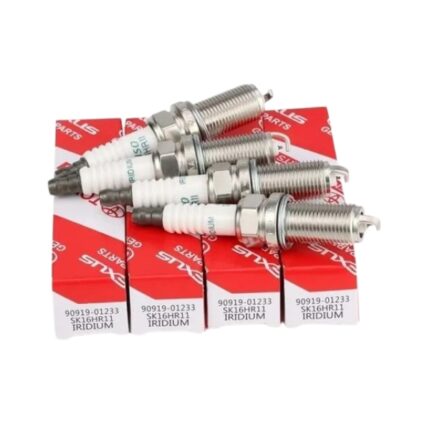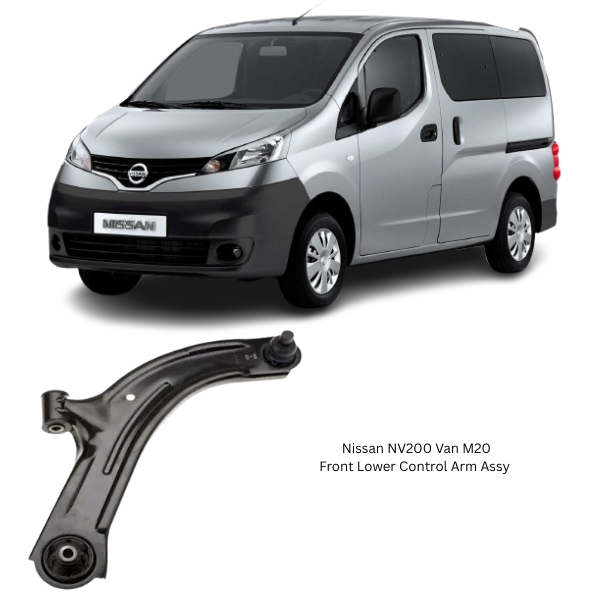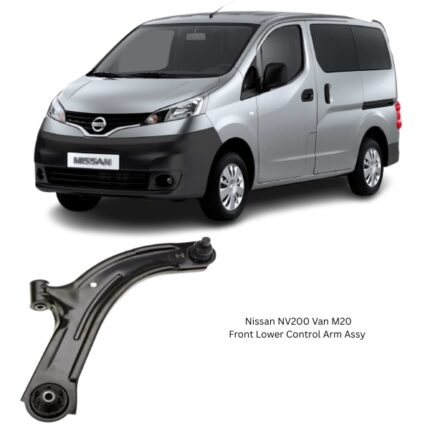Get Nissan NV200 Front Lower Control Arm Assy RH 54500-EL000 in Kenya
The Front Lower Control Arm Assembly RH (Right-Hand) is an essential component of a vehicle’s front suspension system. Located on the passenger side of the front suspension, this part helps to connect the wheel hub to the vehicle’s chassis while allowing for controlled up-and-down motion. It plays a crucial role in maintaining alignment, ensuring stability, and absorbing the stresses of road conditions. In essence, it is one of the main links that keep your vehicle handling properly, driving smoothly, and staying safe on the road.
1. Definition and Purpose
The Front Lower Control Arm Assembly RH is a suspension link that connects the front-right wheel assembly to the frame or subframe of the vehicle. It allows the wheel to move vertically in response to road surface changes while controlling lateral movement and maintaining wheel alignment. The component typically houses bushings on the chassis side and a ball joint on the wheel side, which attaches to the steering knuckle.
Together, the control arm, bushings, and ball joint act as a pivot point between the suspension and the vehicle’s body, helping absorb shock, support the vehicle’s weight, and preserve alignment.
2. Main Components of the Control Arm Assembly
The control arm assembly consists of several interconnected parts, each performing a vital role:
-
Arm Structure: The main body, often shaped like an “A” or “L”, is usually made of stamped steel, forged aluminum, or cast iron for strength and durability.
-
Bushings: Located at the inner pivot points, these rubber or polyurethane components cushion the connection between the arm and chassis, reducing vibration and noise.
-
Ball Joint: Found at the outer end, this spherical bearing connects the arm to the steering knuckle, enabling the wheel to pivot for steering while moving up and down.
-
Mounting Hardware: Includes bolts and washers used to secure the arm to the chassis or subframe.
3. Functionality in the Suspension System
The Front Lower Control Arm RH performs multiple functions that are vital to the performance and safety of a vehicle:
a) Wheel Positioning and Control
It ensures the front-right wheel remains in a fixed, predictable arc of motion as the suspension compresses and rebounds, preserving camber and caster angles.
b) Shock Absorption
Alongside shocks and springs, it helps absorb impacts from road irregularities like potholes and bumps, transferring energy to the frame while reducing harshness.
c) Steering and Handling Stability
The ball joint at the arm’s end connects with the steering knuckle, allowing smooth turning motion while maintaining lateral control over the wheel.
d) Suspension Geometry
It plays a crucial role in maintaining proper suspension geometry, critical for tire contact, safe handling, and predictable road behavior.
4. Types of Lower Control Arms
While the overall function is consistent, control arms come in different configurations:
-
Stamped Steel Arms: Common in many vehicles; durable and cost-effective.
-
Forged Aluminum Arms: Lightweight and corrosion-resistant, often used in performance or luxury vehicles.
-
Cast Iron Arms: Very strong and heavy-duty, found in older or heavy-duty applications.
The RH (Right-Hand) arm is side-specific and designed to fit only the front passenger side. It’s not interchangeable with the LH (Left-Hand) arm due to design and geometric differences.
5. Advantages of a Good-Quality Front Lower Control Arm RH
-
Enhanced Driving Stability: Maintains accurate wheel tracking and improves handling.
-
Extended Tire Life: Keeps alignment within factory specifications, reducing uneven tire wear.
-
Better Ride Comfort: Quality bushings absorb vibration, reducing cabin noise and harshness.
-
Improved Safety: Stable wheel movement helps prevent steering instability and braking issues.
-
Durability: High-quality materials resist corrosion, fatigue, and deformation under stress.
6. Signs of a Worn or Failing Control Arm RH
Control arm assemblies wear out over time, especially under harsh driving conditions. Common symptoms of a failing control arm include:
-
Clunking or Popping Noises – Especially when going over bumps or turning; may indicate worn ball joints or bushings.
-
Uneven Tire Wear – A damaged arm can cause misalignment, leading to inner or outer tire edge wear.
-
Steering Pull or Instability – The car may drift to one side or feel unstable during acceleration or braking.
-
Vibration in the Steering Wheel – Excessive play in the ball joint or bushing can cause noticeable vibrations.
-
Visible Damage – Cracks, rust, or excessive bushing movement on inspection.
7. Causes of Wear and Damage
-
Age and Mileage: Rubber bushings harden and crack over time; ball joints loosen with repeated use.
-
Road Hazards: Impacts from potholes, speed bumps, and curbs can bend the arm or damage joints.
-
Rust and Corrosion: In humid or salted-road environments, unprotected steel arms may corrode.
-
Accidents: Collisions often affect suspension geometry and can lead to control arm failure.
8. Replacement Guidelines
Replacing a worn control arm is essential for safety and optimal vehicle handling.
Tools Required:
-
Jack and jack stands
-
Lug wrench
-
Ratchet and socket set
-
Breaker bar or impact wrench
-
Ball joint separator
-
Torque wrench
Replacement Steps:
-
Lift the Vehicle: Securely raise the front-right side and remove the wheel.
-
Disconnect Ball Joint: Use a separator to free the ball joint from the steering knuckle.
-
Unbolt the Arm from the Chassis: Loosen and remove bolts from the bushing mounts.
-
Remove the Arm: Extract the old assembly.
-
Install the New Arm: Align and secure with bolts; connect the new ball joint to the knuckle.
-
Torque to Specifications: Use a torque wrench for accuracy.
-
Reinstall the Wheel and Lower the Vehicle
-
Alignment: A wheel alignment is strongly recommended to correct any geometry changes.
9. Maintenance Tips
-
Inspect Regularly: During oil changes or tire service, check control arms and bushings for wear or play.
-
Clean Undercarriage: Rinse off road salt and debris to prevent corrosion.
-
Avoid Rough Driving: Reduce speed over rough terrain and avoid curbs.
-
Grease If Applicable: Some ball joints come with grease fittings—keep them lubricated.
-
Replace in Pairs: For balanced performance, replacing both RH and LH arms together may be ideal, especially on high-mileage vehicles.
Follow us on Facebook for more parts.





Reviews
Clear filtersThere are no reviews yet.